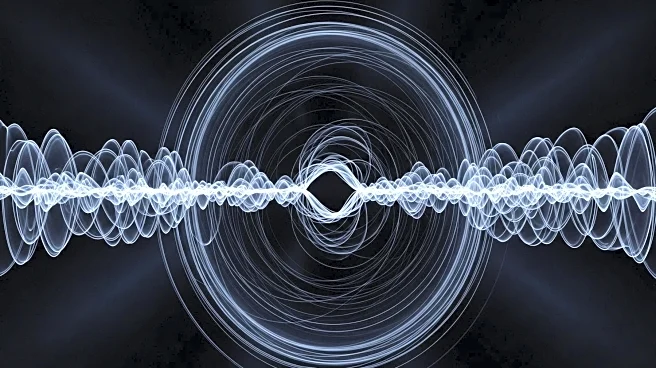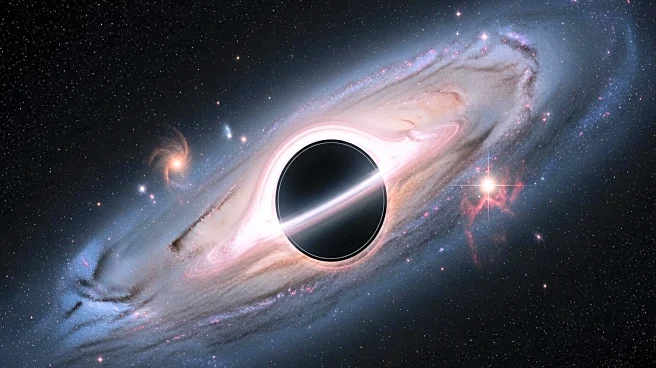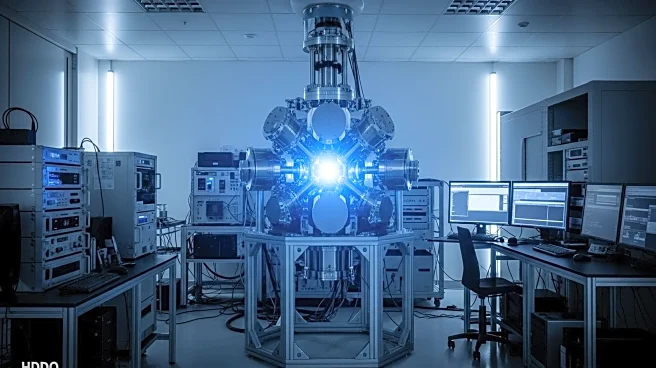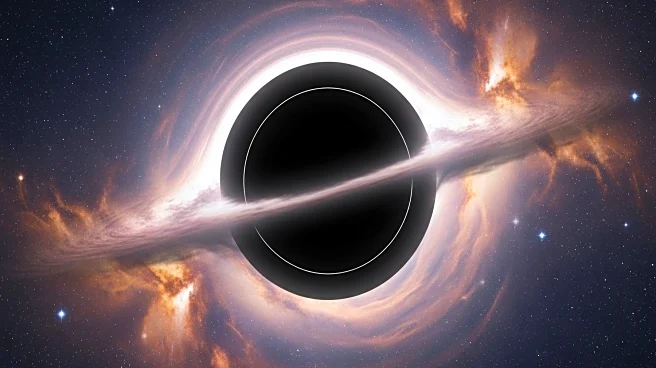What's Happening?
Physicists at the University of British Columbia have proposed a new model for observing quantum tunneling using superfluid helium. The research, led by Dr. Philip Stamp and Michael Desrochers, substitutes a thin film of superfluid helium for a vacuum, allowing vortex/anti-vortex pairs to appear spontaneously. This approach provides a manageable system to study phenomena similar to the Schwinger effect, which theorizes electron-positron pair creation in a vacuum under high electric fields. The findings, published in PNAS, suggest that superfluid helium can mimic cosmic phenomena and offer insights into phase transitions in two-dimensional systems.
Why It's Important?
The research offers a novel way to study quantum tunneling, a process significant in quantum mechanics and field theory. By using superfluid helium, scientists can explore phenomena that are otherwise inaccessible, such as quantum black holes and the early universe. This work could enhance understanding of superfluids and phase transitions, impacting fields like physics, chemistry, and biology. The variability in vortex mass, as demonstrated by the researchers, could lead to new insights into quantum processes, potentially influencing future experimental approaches and theoretical models.
What's Next?
The researchers plan to conduct direct experiments based on their theoretical model, which could validate their findings and further explore the implications of mass variability in vortices. This could lead to advancements in understanding quantum tunneling and its applications across various scientific domains. The work is supported by the National Science and Engineering Research Council, indicating potential for continued research and development in this area.












